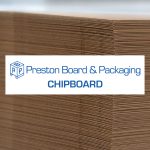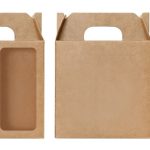Chipboard: Is It The Right Choice For Your Packaging?
As more and more packaging options have become available to businesses of all sizes, knowing which type of material to use can appear to be a daunting task for the uninitiated business owner. One type of material to keep in mind when you are deciding on packaging options is chipboard.
Understanding why and when to use chipboard packaging is important as it will allow you to make sure that your business’ budget is being used properly and efficiently.
 What is chipboard?
What is chipboard?
Chipboard is a cardboard-like paperboard material that is made entirely out of layers of recycled or reclaimed paper. It is because of this eco-minded production technique that chipboard has its characteristic unbleached colour. Unlike its cardboard cousin, chipboard is a non-corrugated paper material and because of this, it is best suited for retail, display and point of sale packaging use, rather than heavy-duty industrial uses.
An additional feature from this slimmer, more direct use material is a more easily foldable medium to work with, making it well suited for folded packaging such as boxes and cartons. Because of its versatile nature, chipboard can often be seen used as the packaging of cereals, frozen foods and non-perishables such as children’s board games. Some other chipboard packaging uses include:
- Beauty products
- Lightbulb packaging
- Cushioning material for transit
Laminated chipboard: A further option
Another option to consider is the laminated variant of chipboard. Laminated chipboard panels are layers of chipboard that have been bonded together with polyvinyl acetate, adding strength to the overall panel. Therefore, laminated chipboard panels are best used for requirements that exceed the maximum thickness of the regular chipboard panels. Some non-packaging uses that illustrate the strength and usefulness of this increased strength and thickness include dump bins, show cards and for display purposes.
Additionally, various different coatings such as polythene and silicon can be applied to the regular chipboard material to produce other laminations, adding heat and moisture-resistant properties to the panel. These kinds of coatings allow chipboard to have its suitable surface qualities for direct printing, allowing printing of packaging artwork directly onto the chipboard’s surface.
If you are looking for a packaging material that is eco-friendly, lightweight, adaptable and versatile, then chipboard is the right packaging choice for you and your business.

